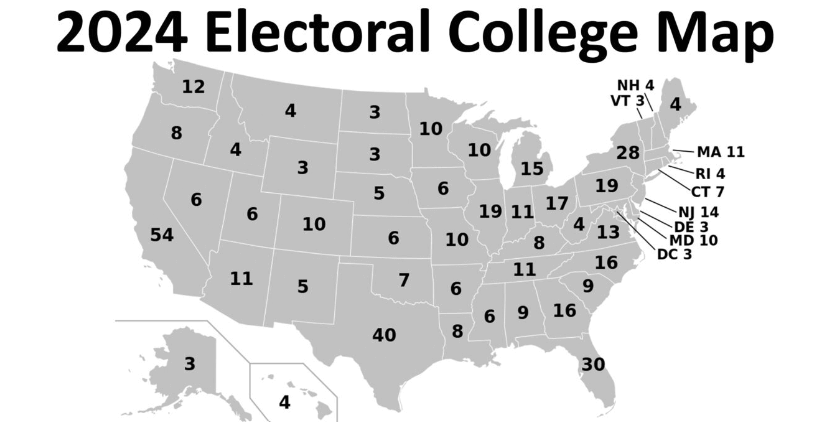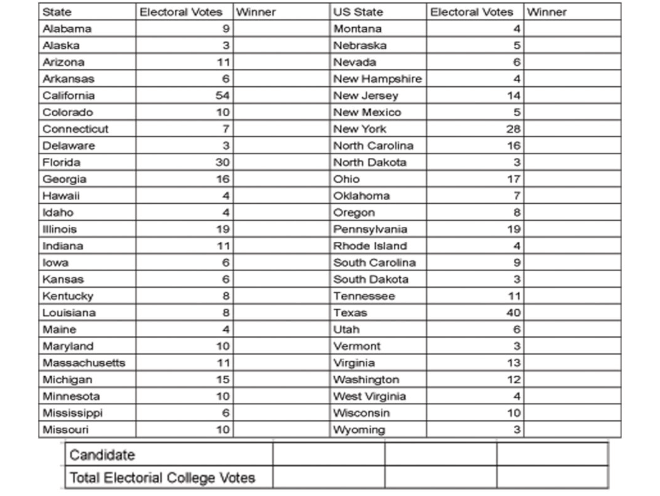a:19:{s:8:"theTitle";s:77:"Why I’m Angry?: Lessons from Trump’s 2024 Victory and Democratic Failures";s:12:"thePermalink";s:104:"https://www.islamicity.org/103396/why-im-angry-lessons-from-trumps-2024-victory-and-democratic-failures/";s:13:"theAuthorName";s:11:"James Zogby";s:12:"theThumbnail";s:65:"https://media.islamicity.org/wp-content/uploads/2024/11/trump.png";s:6:"isWhat";s:7:"article";s:7:"theIcon";s:0:"";s:8:"theEmbed";s:0:"";s:11:"theCategory";s:44:"cannot-retrieve-category-see-cell-part-1.php";s:6:"theTag";s:29:"corruption|/topics/corruption";s:7:"theDate";s:11:"Nov 16 2024";s:11:"theDate_ORG";s:42:"November 16, 2024 {wpcf-soft-date engaged}";s:9:"theAuthor";s:27:"James Zogby|/by/james-zogby";s:5:"theID";i:103396;s:14:"theReadingTime";s:6:"5 min.";s:10:"theExcerpt";s:91:"My reaction to Donald Trump’s recent victory was very different than my reaction in 2016.";s:12:"theTitle_ORG";s:77:"Why I’m Angry?: Lessons from Trump’s 2024 Victory and Democratic Failures";s:25:"processRelatedFacetsTitle";s:0:"";s:15:"whereItCameFrom";s:56:"content.php & related posts > post_tag=us-elections-2024";s:8:"theFacet";s:0:"";}
a:19:{s:8:"theTitle";s:74:"Voting Against Genocide – How Gaza Defeated the Democratic Establishment";s:12:"thePermalink";s:105:"https://www.islamicity.org/103388/voting-against-genocide-how-gaza-defeated-the-democratic-establishment/";s:13:"theAuthorName";s:12:"Ramzy Baroud";s:12:"theThumbnail";s:73:"https://media.islamicity.org/wp-content/uploads/2024/11/USA-Elections.png";s:6:"isWhat";s:7:"article";s:7:"theIcon";s:0:"";s:8:"theEmbed";s:0:"";s:11:"theCategory";s:44:"cannot-retrieve-category-see-cell-part-1.php";s:6:"theTag";s:33:"donald trump|/topics/donald-trump";s:7:"theDate";s:11:"Nov 15 2024";s:11:"theDate_ORG";s:42:"November 15, 2024 {wpcf-soft-date engaged}";s:9:"theAuthor";s:29:"Ramzy Baroud|/by/ramzy-baroud";s:5:"theID";i:103388;s:14:"theReadingTime";s:6:"7 min.";s:10:"theExcerpt";s:122:"
Arab and Muslim American voters did not remove Democrats from office, nor did they cost Kamala Harris the Oval Office.";s:12:"theTitle_ORG";s:74:"Voting Against Genocide – How Gaza Defeated the Democratic Establishment";s:25:"processRelatedFacetsTitle";s:0:"";s:15:"whereItCameFrom";s:56:"content.php & related posts > post_tag=us-elections-2024";s:8:"theFacet";s:0:"";}
a:19:{s:8:"theTitle";s:48:"Trump's Choices: Obliterate Palestine or End War";s:12:"thePermalink";s:81:"https://www.islamicity.org/103377/trumps-choices-obliterate-palestine-or-end-war/";s:13:"theAuthorName";s:12:"David Hearst";s:12:"theThumbnail";s:73:"https://media.islamicity.org/wp-content/uploads/2024/11/Trump-and-usa.png";s:6:"isWhat";s:7:"article";s:7:"theIcon";s:0:"";s:8:"theEmbed";s:0:"";s:11:"theCategory";s:44:"cannot-retrieve-category-see-cell-part-1.php";s:6:"theTag";s:31:"war on gaza|/topics/war-on-gaza";s:7:"theDate";s:11:"Nov 14 2024";s:11:"theDate_ORG";s:42:"November 13, 2024 {wpcf-soft-date engaged}";s:9:"theAuthor";s:29:"David Hearst|/by/david-hearst";s:5:"theID";i:103377;s:14:"theReadingTime";s:7:"18 min.";s:10:"theExcerpt";s:186:"The US leader's return to power can only accelerate the destruction of the status quo in the Middle East that he started in his first term.
Conventional wisdom has it that Trump......";s:12:"theTitle_ORG";s:48:"Trump's Choices: Obliterate Palestine or End War";s:25:"processRelatedFacetsTitle";s:0:"";s:15:"whereItCameFrom";s:56:"content.php & related posts > post_tag=us-elections-2024";s:8:"theFacet";s:0:"";}
a:19:{s:8:"theTitle";s:68:"Trump Shuts the Door on Haley and Pompeo – Here's Why That's a Win";s:12:"thePermalink";s:97:"https://www.islamicity.org/103382/trump-shuts-the-door-on-haley-and-pompeo-heres-why-thats-a-win/";s:13:"theAuthorName";s:19:"Mahmoud El-Yousseph";s:12:"theThumbnail";s:90:"https://media.islamicity.org/wp-content/uploads/2024/11/trump-removed-nikki-and-pompeo.png";s:6:"isWhat";s:7:"article";s:7:"theIcon";s:0:"";s:8:"theEmbed";s:0:"";s:11:"theCategory";s:44:"cannot-retrieve-category-see-cell-part-1.php";s:6:"theTag";s:43:"us elections 2024|/topics/us-elections-2024";s:7:"theDate";s:11:"Nov 14 2024";s:11:"theDate_ORG";s:42:"November 14, 2024 {wpcf-soft-date engaged}";s:9:"theAuthor";s:43:"Mahmoud El-Yousseph|/by/mahmoud-el-yousseph";s:5:"theID";i:103382;s:14:"theReadingTime";s:6:"3 min.";s:10:"theExcerpt";s:186:"
President-elect Trump announced yesterday that neither former UN Ambassador Nikki Haley nor former Secretary of State Mike Pompeo will be a part of his new administration......";s:12:"theTitle_ORG";s:68:"Trump Shuts the Door on Haley and Pompeo – Here's Why That's a Win";s:25:"processRelatedFacetsTitle";s:0:"";s:15:"whereItCameFrom";s:56:"content.php & related posts > post_tag=us-elections-2024";s:8:"theFacet";s:0:"";}
a:19:{s:8:"theTitle";s:60:"A Shifting US Stance on the Middle East: Party Lines Redrawn";s:12:"thePermalink";s:94:"https://www.islamicity.org/103376/a-shifting-us-stance-on-the-middle-east-party-lines-redrawn/";s:13:"theAuthorName";s:11:"James Zogby";s:12:"theThumbnail";s:76:"https://media.islamicity.org/wp-content/uploads/2024/11/Trump-presidency.png";s:6:"isWhat";s:7:"article";s:7:"theIcon";s:0:"";s:8:"theEmbed";s:0:"";s:11:"theCategory";s:44:"cannot-retrieve-category-see-cell-part-1.php";s:6:"theTag";s:33:"donald trump|/topics/donald-trump";s:7:"theDate";s:11:"Nov 13 2024";s:11:"theDate_ORG";s:42:"November 13, 2024 {wpcf-soft-date engaged}";s:9:"theAuthor";s:27:"James Zogby|/by/james-zogby";s:5:"theID";i:103376;s:14:"theReadingTime";s:6:"5 min.";s:10:"theExcerpt";s:112:"The Middle East conflict and this year’s US presidential election are impacting one another in important ways.";s:12:"theTitle_ORG";s:60:"A Shifting US Stance on the Middle East: Party Lines Redrawn";s:25:"processRelatedFacetsTitle";s:0:"";s:15:"whereItCameFrom";s:56:"content.php & related posts > post_tag=us-elections-2024";s:8:"theFacet";s:0:"";}
a:19:{s:8:"theTitle";s:59:"Why the Muslim and Arab-American Vote Shifted Towards Trump";s:12:"thePermalink";s:94:"https://www.islamicity.org/103345/why-the-muslim-and-arab-american-vote-shifted-towards-trump/";s:13:"theAuthorName";s:7:"Dw News";s:12:"theThumbnail";s:56:"https://img.youtube.com/vi/BDSXCHkPDHM/maxresdefault.jpg";s:6:"isWhat";s:5:"video";s:7:"theIcon";s:33:"";s:8:"theEmbed";s:43:"https://www.youtube.com/watch?v=BDSXCHkPDHM";s:11:"theCategory";s:44:"cannot-retrieve-category-see-cell-part-1.php";s:6:"theTag";s:37:"arab americans|/topics/arab-americans";s:7:"theDate";s:10:"Nov 9 2024";s:11:"theDate_ORG";s:41:"November 8, 2024 {wpcf-soft-date engaged}";s:9:"theAuthor";s:23:"Dw News|/source/dw-news";s:5:"theID";i:103345;s:14:"theReadingTime";s:6:"8 min.";s:10:"theExcerpt";s:153:"The city of Dearborn, which is located in the swing-state of Michigan, was home to one of the most closely-watched races in the US presidential election.";s:12:"theTitle_ORG";s:59:"Why the Muslim and Arab-American Vote Shifted Towards Trump";s:25:"processRelatedFacetsTitle";s:0:"";s:15:"whereItCameFrom";s:56:"content.php & related posts > post_tag=us-elections-2024";s:8:"theFacet";s:0:"";}
a:19:{s:8:"theTitle";s:40:"Democrats Need an Autopsy of 2024 Defeat";s:12:"thePermalink";s:75:"https://www.islamicity.org/103724/democrats-need-an-autopsy-of-2024-defeat/";s:13:"theAuthorName";s:11:"James Zogby";s:12:"theThumbnail";s:68:"https://media.islamicity.org/wp-content/uploads/2024/12/politics.jpg";s:6:"isWhat";s:7:"article";s:7:"theIcon";s:0:"";s:8:"theEmbed";s:0:"";s:11:"theCategory";s:44:"cannot-retrieve-category-see-cell-part-1.php";s:6:"theTag";s:43:"us elections 2024|/topics/us-elections-2024";s:7:"theDate";s:11:"Dec 21 2024";s:11:"theDate_ORG";s:42:"December 21, 2024 {wpcf-soft-date engaged}";s:9:"theAuthor";s:27:"James Zogby|/by/james-zogby";s:5:"theID";i:103724;s:14:"theReadingTime";s:6:"5 min.";s:10:"theExcerpt";s:75:"Democrats are still reeling from the shock of losing to Donald Trump again.";s:12:"theTitle_ORG";s:40:"Democrats Need an Autopsy of 2024 Defeat";s:25:"processRelatedFacetsTitle";s:0:"";s:15:"whereItCameFrom";s:56:"content.php & related posts > post_tag=us-elections-2024";s:8:"theFacet";s:0:"";}
a:19:{s:8:"theTitle";s:53:"Biden’s Legacy: Fecklessness or Complicity in Gaza?";s:12:"thePermalink";s:83:"https://www.islamicity.org/103550/bidens-legacy-fecklessness-or-complicity-in-gaza/";s:13:"theAuthorName";s:11:"James Zogby";s:12:"theThumbnail";s:73:"https://media.islamicity.org/wp-content/uploads/2024/12/bidens-legacy.png";s:6:"isWhat";s:7:"article";s:7:"theIcon";s:0:"";s:8:"theEmbed";s:0:"";s:11:"theCategory";s:44:"cannot-retrieve-category-see-cell-part-1.php";s:6:"theTag";s:65:"israeli-palestinian conflict|/topics/israeli-palestinian-conflict";s:7:"theDate";s:10:"Dec 1 2024";s:11:"theDate_ORG";s:41:"December 1, 2024 {wpcf-soft-date engaged}";s:9:"theAuthor";s:27:"James Zogby|/by/james-zogby";s:5:"theID";i:103550;s:14:"theReadingTime";s:6:"5 min.";s:10:"theExcerpt";s:118:"History won’t be kind to Joseph Biden’s presidency in evaluating his handling of Israel’s genocidal war on Gaza.";s:12:"theTitle_ORG";s:53:"Biden’s Legacy: Fecklessness or Complicity in Gaza?";s:25:"processRelatedFacetsTitle";s:0:"";s:15:"whereItCameFrom";s:56:"content.php & related posts > post_tag=us-elections-2024";s:8:"theFacet";s:0:"";}
a:19:{s:8:"theTitle";s:55:"Faithful Resistance: Muslim Challenges in U.S. Politics";s:12:"thePermalink";s:88:"https://www.islamicity.org/103437/faithful-resistance-muslim-challenges-in-u-s-politics/";s:13:"theAuthorName";s:10:"Sami Hamdi";s:12:"theThumbnail";s:56:"https://img.youtube.com/vi/0C00PKPYSiA/maxresdefault.jpg";s:6:"isWhat";s:5:"video";s:7:"theIcon";s:33:"";s:8:"theEmbed";s:43:"https://www.youtube.com/watch?v=0C00PKPYSiA";s:11:"theCategory";s:44:"cannot-retrieve-category-see-cell-part-1.php";s:6:"theTag";s:53:"iman (faith and belief)|/topics/iman-faith-and-belief";s:7:"theDate";s:11:"Nov 19 2024";s:11:"theDate_ORG";s:42:"November 18, 2024 {wpcf-soft-date engaged}";s:9:"theAuthor";s:25:"Sami Hamdi|/by/sami-hamdi";s:5:"theID";i:103437;s:14:"theReadingTime";s:7:"60 min.";s:10:"theExcerpt";s:152:"On The Thinking Muslim podcast, Sami Hamdi examines Trump’s political impact on the Muslim community, exploring issues like Gaza’s influence on U.S.";s:12:"theTitle_ORG";s:55:"Faithful Resistance: Muslim Challenges in U.S. Politics";s:25:"processRelatedFacetsTitle";s:0:"";s:15:"whereItCameFrom";s:56:"content.php & related posts > post_tag=us-elections-2024";s:8:"theFacet";s:0:"";}
a:19:{s:8:"theTitle";s:50:"Has Kamala Harris abided by her parents’ advice?";s:12:"thePermalink";s:81:"https://www.islamicity.org/103428/has-kamala-harris-abided-by-her-parents-advice/";s:13:"theAuthorName";s:14:"Mahmudul Hasan";s:12:"theThumbnail";s:82:"https://media.islamicity.org/wp-content/uploads/2024/11/Kamala-harris-election.png";s:6:"isWhat";s:7:"article";s:7:"theIcon";s:0:"";s:8:"theEmbed";s:0:"";s:11:"theCategory";s:44:"cannot-retrieve-category-see-cell-part-1.php";s:6:"theTag";s:35:"kamala harris|/topics/kamala-harris";s:7:"theDate";s:11:"Nov 18 2024";s:11:"theDate_ORG";s:42:"November 18, 2024 {wpcf-soft-date engaged}";s:9:"theAuthor";s:33:"Mahmudul Hasan|/by/mahmudul-hasan";s:5:"theID";i:103428;s:14:"theReadingTime";s:6:"7 min.";s:10:"theExcerpt";s:186:"I WAS in the neighbouring city of Milwaukee during the 2024 Democratic National Convention (DNC) that took place in Chicago on August 19–22.
We all knew that Kamala Harris wou......";s:12:"theTitle_ORG";s:50:"Has Kamala Harris abided by her parents’ advice?";s:25:"processRelatedFacetsTitle";s:0:"";s:15:"whereItCameFrom";s:56:"content.php & related posts > post_tag=us-elections-2024";s:8:"theFacet";s:0:"";}
a:19:{s:8:"theTitle";s:49:"Liberals Blame Arab Americans for Trump's Victory";s:12:"thePermalink";s:83:"https://www.islamicity.org/103393/liberals-blame-arab-americans-for-trumps-victory/";s:13:"theAuthorName";s:13:"Raja Abdulhaq";s:12:"theThumbnail";s:56:"https://img.youtube.com/vi/gx94uewSQgc/maxresdefault.jpg";s:6:"isWhat";s:5:"video";s:7:"theIcon";s:33:"";s:8:"theEmbed";s:43:"https://www.youtube.com/watch?v=gx94uewSQgc";s:11:"theCategory";s:44:"cannot-retrieve-category-see-cell-part-1.php";s:6:"theTag";s:37:"arab americans|/topics/arab-americans";s:7:"theDate";s:11:"Nov 16 2024";s:11:"theDate_ORG";s:42:"November 15, 2024 {wpcf-soft-date engaged}";s:9:"theAuthor";s:31:"Raja Abdulhaq|/by/raja-abdulhaq";s:5:"theID";i:103393;s:14:"theReadingTime";s:6:"7 min.";s:10:"theExcerpt";s:186:"Raja Abdulhaq, a Palestinian political organizer and researcher, talks about how liberals in the United States took to social media to criticize American Muslims, Arabs, and Latino......";s:12:"theTitle_ORG";s:49:"Liberals Blame Arab Americans for Trump's Victory";s:25:"processRelatedFacetsTitle";s:0:"";s:15:"whereItCameFrom";s:56:"content.php & related posts > post_tag=us-elections-2024";s:8:"theFacet";s:0:"";}
a:19:{s:8:"theTitle";s:77:"Why I’m Angry?: Lessons from Trump’s 2024 Victory and Democratic Failures";s:12:"thePermalink";s:104:"https://www.islamicity.org/103396/why-im-angry-lessons-from-trumps-2024-victory-and-democratic-failures/";s:13:"theAuthorName";s:11:"James Zogby";s:12:"theThumbnail";s:65:"https://media.islamicity.org/wp-content/uploads/2024/11/trump.png";s:6:"isWhat";s:7:"article";s:7:"theIcon";s:0:"";s:8:"theEmbed";s:0:"";s:11:"theCategory";s:44:"cannot-retrieve-category-see-cell-part-1.php";s:6:"theTag";s:29:"corruption|/topics/corruption";s:7:"theDate";s:11:"Nov 16 2024";s:11:"theDate_ORG";s:42:"November 16, 2024 {wpcf-soft-date engaged}";s:9:"theAuthor";s:27:"James Zogby|/by/james-zogby";s:5:"theID";i:103396;s:14:"theReadingTime";s:6:"5 min.";s:10:"theExcerpt";s:91:"My reaction to Donald Trump’s recent victory was very different than my reaction in 2016.";s:12:"theTitle_ORG";s:77:"Why I’m Angry?: Lessons from Trump’s 2024 Victory and Democratic Failures";s:25:"processRelatedFacetsTitle";s:0:"";s:15:"whereItCameFrom";s:56:"content.php & related posts > post_tag=us-elections-2024";s:8:"theFacet";s:0:"";}
a:19:{s:8:"theTitle";s:74:"Voting Against Genocide – How Gaza Defeated the Democratic Establishment";s:12:"thePermalink";s:105:"https://www.islamicity.org/103388/voting-against-genocide-how-gaza-defeated-the-democratic-establishment/";s:13:"theAuthorName";s:12:"Ramzy Baroud";s:12:"theThumbnail";s:73:"https://media.islamicity.org/wp-content/uploads/2024/11/USA-Elections.png";s:6:"isWhat";s:7:"article";s:7:"theIcon";s:0:"";s:8:"theEmbed";s:0:"";s:11:"theCategory";s:44:"cannot-retrieve-category-see-cell-part-1.php";s:6:"theTag";s:33:"donald trump|/topics/donald-trump";s:7:"theDate";s:11:"Nov 15 2024";s:11:"theDate_ORG";s:42:"November 15, 2024 {wpcf-soft-date engaged}";s:9:"theAuthor";s:29:"Ramzy Baroud|/by/ramzy-baroud";s:5:"theID";i:103388;s:14:"theReadingTime";s:6:"7 min.";s:10:"theExcerpt";s:122:"
Arab and Muslim American voters did not remove Democrats from office, nor did they cost Kamala Harris the Oval Office.";s:12:"theTitle_ORG";s:74:"Voting Against Genocide – How Gaza Defeated the Democratic Establishment";s:25:"processRelatedFacetsTitle";s:0:"";s:15:"whereItCameFrom";s:56:"content.php & related posts > post_tag=us-elections-2024";s:8:"theFacet";s:0:"";}
a:19:{s:8:"theTitle";s:48:"Trump's Choices: Obliterate Palestine or End War";s:12:"thePermalink";s:81:"https://www.islamicity.org/103377/trumps-choices-obliterate-palestine-or-end-war/";s:13:"theAuthorName";s:12:"David Hearst";s:12:"theThumbnail";s:73:"https://media.islamicity.org/wp-content/uploads/2024/11/Trump-and-usa.png";s:6:"isWhat";s:7:"article";s:7:"theIcon";s:0:"";s:8:"theEmbed";s:0:"";s:11:"theCategory";s:44:"cannot-retrieve-category-see-cell-part-1.php";s:6:"theTag";s:31:"war on gaza|/topics/war-on-gaza";s:7:"theDate";s:11:"Nov 14 2024";s:11:"theDate_ORG";s:42:"November 13, 2024 {wpcf-soft-date engaged}";s:9:"theAuthor";s:29:"David Hearst|/by/david-hearst";s:5:"theID";i:103377;s:14:"theReadingTime";s:7:"18 min.";s:10:"theExcerpt";s:186:"The US leader's return to power can only accelerate the destruction of the status quo in the Middle East that he started in his first term.
Conventional wisdom has it that Trump......";s:12:"theTitle_ORG";s:48:"Trump's Choices: Obliterate Palestine or End War";s:25:"processRelatedFacetsTitle";s:0:"";s:15:"whereItCameFrom";s:56:"content.php & related posts > post_tag=us-elections-2024";s:8:"theFacet";s:0:"";}
a:19:{s:8:"theTitle";s:68:"Trump Shuts the Door on Haley and Pompeo – Here's Why That's a Win";s:12:"thePermalink";s:97:"https://www.islamicity.org/103382/trump-shuts-the-door-on-haley-and-pompeo-heres-why-thats-a-win/";s:13:"theAuthorName";s:19:"Mahmoud El-Yousseph";s:12:"theThumbnail";s:90:"https://media.islamicity.org/wp-content/uploads/2024/11/trump-removed-nikki-and-pompeo.png";s:6:"isWhat";s:7:"article";s:7:"theIcon";s:0:"";s:8:"theEmbed";s:0:"";s:11:"theCategory";s:44:"cannot-retrieve-category-see-cell-part-1.php";s:6:"theTag";s:43:"us elections 2024|/topics/us-elections-2024";s:7:"theDate";s:11:"Nov 14 2024";s:11:"theDate_ORG";s:42:"November 14, 2024 {wpcf-soft-date engaged}";s:9:"theAuthor";s:43:"Mahmoud El-Yousseph|/by/mahmoud-el-yousseph";s:5:"theID";i:103382;s:14:"theReadingTime";s:6:"3 min.";s:10:"theExcerpt";s:186:"
President-elect Trump announced yesterday that neither former UN Ambassador Nikki Haley nor former Secretary of State Mike Pompeo will be a part of his new administration......";s:12:"theTitle_ORG";s:68:"Trump Shuts the Door on Haley and Pompeo – Here's Why That's a Win";s:25:"processRelatedFacetsTitle";s:0:"";s:15:"whereItCameFrom";s:56:"content.php & related posts > post_tag=us-elections-2024";s:8:"theFacet";s:0:"";}
a:19:{s:8:"theTitle";s:60:"A Shifting US Stance on the Middle East: Party Lines Redrawn";s:12:"thePermalink";s:94:"https://www.islamicity.org/103376/a-shifting-us-stance-on-the-middle-east-party-lines-redrawn/";s:13:"theAuthorName";s:11:"James Zogby";s:12:"theThumbnail";s:76:"https://media.islamicity.org/wp-content/uploads/2024/11/Trump-presidency.png";s:6:"isWhat";s:7:"article";s:7:"theIcon";s:0:"";s:8:"theEmbed";s:0:"";s:11:"theCategory";s:44:"cannot-retrieve-category-see-cell-part-1.php";s:6:"theTag";s:33:"donald trump|/topics/donald-trump";s:7:"theDate";s:11:"Nov 13 2024";s:11:"theDate_ORG";s:42:"November 13, 2024 {wpcf-soft-date engaged}";s:9:"theAuthor";s:27:"James Zogby|/by/james-zogby";s:5:"theID";i:103376;s:14:"theReadingTime";s:6:"5 min.";s:10:"theExcerpt";s:112:"The Middle East conflict and this year’s US presidential election are impacting one another in important ways.";s:12:"theTitle_ORG";s:60:"A Shifting US Stance on the Middle East: Party Lines Redrawn";s:25:"processRelatedFacetsTitle";s:0:"";s:15:"whereItCameFrom";s:56:"content.php & related posts > post_tag=us-elections-2024";s:8:"theFacet";s:0:"";}
a:19:{s:8:"theTitle";s:59:"Why the Muslim and Arab-American Vote Shifted Towards Trump";s:12:"thePermalink";s:94:"https://www.islamicity.org/103345/why-the-muslim-and-arab-american-vote-shifted-towards-trump/";s:13:"theAuthorName";s:7:"Dw News";s:12:"theThumbnail";s:56:"https://img.youtube.com/vi/BDSXCHkPDHM/maxresdefault.jpg";s:6:"isWhat";s:5:"video";s:7:"theIcon";s:33:"";s:8:"theEmbed";s:43:"https://www.youtube.com/watch?v=BDSXCHkPDHM";s:11:"theCategory";s:44:"cannot-retrieve-category-see-cell-part-1.php";s:6:"theTag";s:37:"arab americans|/topics/arab-americans";s:7:"theDate";s:10:"Nov 9 2024";s:11:"theDate_ORG";s:41:"November 8, 2024 {wpcf-soft-date engaged}";s:9:"theAuthor";s:23:"Dw News|/source/dw-news";s:5:"theID";i:103345;s:14:"theReadingTime";s:6:"8 min.";s:10:"theExcerpt";s:153:"The city of Dearborn, which is located in the swing-state of Michigan, was home to one of the most closely-watched races in the US presidential election.";s:12:"theTitle_ORG";s:59:"Why the Muslim and Arab-American Vote Shifted Towards Trump";s:25:"processRelatedFacetsTitle";s:0:"";s:15:"whereItCameFrom";s:56:"content.php & related posts > post_tag=us-elections-2024";s:8:"theFacet";s:0:"";}
a:19:{s:8:"theTitle";s:40:"Democrats Need an Autopsy of 2024 Defeat";s:12:"thePermalink";s:75:"https://www.islamicity.org/103724/democrats-need-an-autopsy-of-2024-defeat/";s:13:"theAuthorName";s:11:"James Zogby";s:12:"theThumbnail";s:68:"https://media.islamicity.org/wp-content/uploads/2024/12/politics.jpg";s:6:"isWhat";s:7:"article";s:7:"theIcon";s:0:"";s:8:"theEmbed";s:0:"";s:11:"theCategory";s:44:"cannot-retrieve-category-see-cell-part-1.php";s:6:"theTag";s:43:"us elections 2024|/topics/us-elections-2024";s:7:"theDate";s:11:"Dec 21 2024";s:11:"theDate_ORG";s:42:"December 21, 2024 {wpcf-soft-date engaged}";s:9:"theAuthor";s:27:"James Zogby|/by/james-zogby";s:5:"theID";i:103724;s:14:"theReadingTime";s:6:"5 min.";s:10:"theExcerpt";s:75:"Democrats are still reeling from the shock of losing to Donald Trump again.";s:12:"theTitle_ORG";s:40:"Democrats Need an Autopsy of 2024 Defeat";s:25:"processRelatedFacetsTitle";s:0:"";s:15:"whereItCameFrom";s:56:"content.php & related posts > post_tag=us-elections-2024";s:8:"theFacet";s:0:"";}
a:19:{s:8:"theTitle";s:53:"Biden’s Legacy: Fecklessness or Complicity in Gaza?";s:12:"thePermalink";s:83:"https://www.islamicity.org/103550/bidens-legacy-fecklessness-or-complicity-in-gaza/";s:13:"theAuthorName";s:11:"James Zogby";s:12:"theThumbnail";s:73:"https://media.islamicity.org/wp-content/uploads/2024/12/bidens-legacy.png";s:6:"isWhat";s:7:"article";s:7:"theIcon";s:0:"";s:8:"theEmbed";s:0:"";s:11:"theCategory";s:44:"cannot-retrieve-category-see-cell-part-1.php";s:6:"theTag";s:65:"israeli-palestinian conflict|/topics/israeli-palestinian-conflict";s:7:"theDate";s:10:"Dec 1 2024";s:11:"theDate_ORG";s:41:"December 1, 2024 {wpcf-soft-date engaged}";s:9:"theAuthor";s:27:"James Zogby|/by/james-zogby";s:5:"theID";i:103550;s:14:"theReadingTime";s:6:"5 min.";s:10:"theExcerpt";s:118:"History won’t be kind to Joseph Biden’s presidency in evaluating his handling of Israel’s genocidal war on Gaza.";s:12:"theTitle_ORG";s:53:"Biden’s Legacy: Fecklessness or Complicity in Gaza?";s:25:"processRelatedFacetsTitle";s:0:"";s:15:"whereItCameFrom";s:56:"content.php & related posts > post_tag=us-elections-2024";s:8:"theFacet";s:0:"";}
a:19:{s:8:"theTitle";s:55:"Faithful Resistance: Muslim Challenges in U.S. Politics";s:12:"thePermalink";s:88:"https://www.islamicity.org/103437/faithful-resistance-muslim-challenges-in-u-s-politics/";s:13:"theAuthorName";s:10:"Sami Hamdi";s:12:"theThumbnail";s:56:"https://img.youtube.com/vi/0C00PKPYSiA/maxresdefault.jpg";s:6:"isWhat";s:5:"video";s:7:"theIcon";s:33:"";s:8:"theEmbed";s:43:"https://www.youtube.com/watch?v=0C00PKPYSiA";s:11:"theCategory";s:44:"cannot-retrieve-category-see-cell-part-1.php";s:6:"theTag";s:53:"iman (faith and belief)|/topics/iman-faith-and-belief";s:7:"theDate";s:11:"Nov 19 2024";s:11:"theDate_ORG";s:42:"November 18, 2024 {wpcf-soft-date engaged}";s:9:"theAuthor";s:25:"Sami Hamdi|/by/sami-hamdi";s:5:"theID";i:103437;s:14:"theReadingTime";s:7:"60 min.";s:10:"theExcerpt";s:152:"On The Thinking Muslim podcast, Sami Hamdi examines Trump’s political impact on the Muslim community, exploring issues like Gaza’s influence on U.S.";s:12:"theTitle_ORG";s:55:"Faithful Resistance: Muslim Challenges in U.S. Politics";s:25:"processRelatedFacetsTitle";s:0:"";s:15:"whereItCameFrom";s:56:"content.php & related posts > post_tag=us-elections-2024";s:8:"theFacet";s:0:"";}
a:19:{s:8:"theTitle";s:50:"Has Kamala Harris abided by her parents’ advice?";s:12:"thePermalink";s:81:"https://www.islamicity.org/103428/has-kamala-harris-abided-by-her-parents-advice/";s:13:"theAuthorName";s:14:"Mahmudul Hasan";s:12:"theThumbnail";s:82:"https://media.islamicity.org/wp-content/uploads/2024/11/Kamala-harris-election.png";s:6:"isWhat";s:7:"article";s:7:"theIcon";s:0:"";s:8:"theEmbed";s:0:"";s:11:"theCategory";s:44:"cannot-retrieve-category-see-cell-part-1.php";s:6:"theTag";s:35:"kamala harris|/topics/kamala-harris";s:7:"theDate";s:11:"Nov 18 2024";s:11:"theDate_ORG";s:42:"November 18, 2024 {wpcf-soft-date engaged}";s:9:"theAuthor";s:33:"Mahmudul Hasan|/by/mahmudul-hasan";s:5:"theID";i:103428;s:14:"theReadingTime";s:6:"7 min.";s:10:"theExcerpt";s:186:"I WAS in the neighbouring city of Milwaukee during the 2024 Democratic National Convention (DNC) that took place in Chicago on August 19–22.
We all knew that Kamala Harris wou......";s:12:"theTitle_ORG";s:50:"Has Kamala Harris abided by her parents’ advice?";s:25:"processRelatedFacetsTitle";s:0:"";s:15:"whereItCameFrom";s:56:"content.php & related posts > post_tag=us-elections-2024";s:8:"theFacet";s:0:"";}
a:19:{s:8:"theTitle";s:49:"Liberals Blame Arab Americans for Trump's Victory";s:12:"thePermalink";s:83:"https://www.islamicity.org/103393/liberals-blame-arab-americans-for-trumps-victory/";s:13:"theAuthorName";s:13:"Raja Abdulhaq";s:12:"theThumbnail";s:56:"https://img.youtube.com/vi/gx94uewSQgc/maxresdefault.jpg";s:6:"isWhat";s:5:"video";s:7:"theIcon";s:33:"";s:8:"theEmbed";s:43:"https://www.youtube.com/watch?v=gx94uewSQgc";s:11:"theCategory";s:44:"cannot-retrieve-category-see-cell-part-1.php";s:6:"theTag";s:37:"arab americans|/topics/arab-americans";s:7:"theDate";s:11:"Nov 16 2024";s:11:"theDate_ORG";s:42:"November 15, 2024 {wpcf-soft-date engaged}";s:9:"theAuthor";s:31:"Raja Abdulhaq|/by/raja-abdulhaq";s:5:"theID";i:103393;s:14:"theReadingTime";s:6:"7 min.";s:10:"theExcerpt";s:186:"Raja Abdulhaq, a Palestinian political organizer and researcher, talks about how liberals in the United States took to social media to criticize American Muslims, Arabs, and Latino......";s:12:"theTitle_ORG";s:49:"Liberals Blame Arab Americans for Trump's Victory";s:25:"processRelatedFacetsTitle";s:0:"";s:15:"whereItCameFrom";s:56:"content.php & related posts > post_tag=us-elections-2024";s:8:"theFacet";s:0:"";}
a:19:{s:8:"theTitle";s:77:"Why I’m Angry?: Lessons from Trump’s 2024 Victory and Democratic Failures";s:12:"thePermalink";s:104:"https://www.islamicity.org/103396/why-im-angry-lessons-from-trumps-2024-victory-and-democratic-failures/";s:13:"theAuthorName";s:11:"James Zogby";s:12:"theThumbnail";s:65:"https://media.islamicity.org/wp-content/uploads/2024/11/trump.png";s:6:"isWhat";s:7:"article";s:7:"theIcon";s:0:"";s:8:"theEmbed";s:0:"";s:11:"theCategory";s:44:"cannot-retrieve-category-see-cell-part-1.php";s:6:"theTag";s:29:"corruption|/topics/corruption";s:7:"theDate";s:11:"Nov 16 2024";s:11:"theDate_ORG";s:42:"November 16, 2024 {wpcf-soft-date engaged}";s:9:"theAuthor";s:27:"James Zogby|/by/james-zogby";s:5:"theID";i:103396;s:14:"theReadingTime";s:6:"5 min.";s:10:"theExcerpt";s:91:"My reaction to Donald Trump’s recent victory was very different than my reaction in 2016.";s:12:"theTitle_ORG";s:77:"Why I’m Angry?: Lessons from Trump’s 2024 Victory and Democratic Failures";s:25:"processRelatedFacetsTitle";s:0:"";s:15:"whereItCameFrom";s:56:"content.php & related posts > post_tag=us-elections-2024";s:8:"theFacet";s:0:"";}
 {file:content.php} {function:blp_getCustomField} {postID:102237} {customField:theClapCount} {default:0}not-in-use-in-plain-child
{file:content.php} {function:blp_getCustomField} {postID:102237} {customField:theClapCount} {default:0}not-in-use-in-plain-child



















